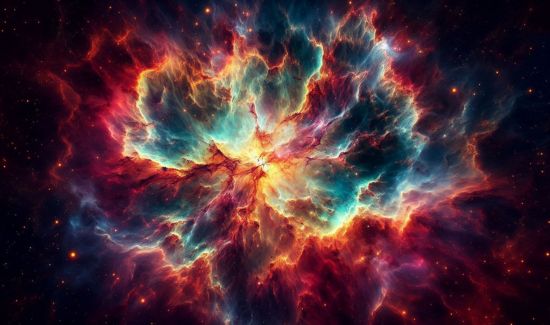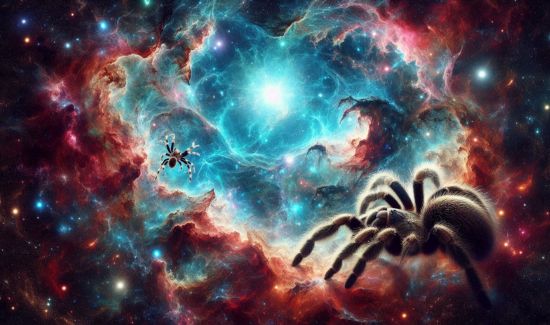Introduction: Welcome to the World of the Tarantula Nebula 4K
Table of Contents
Have you ever looked up at the night sky and wondered what lies beyond the stars? The universe is full of amazing wonders, and one of the most exciting ones is the Tarantula Nebula 4K. It’s a large cloud of gas and dust home to some of the youngest and hottest stars. Imagine being able to see all its details in high-quality 4K resolution! In this article, we’ll take you on an exciting journey through space, exploring the Tarantula Nebula 4K and all its fascinating features. By the end, you’ll feel like you’ve visited this extraordinary cosmic cloud yourself!
What is the Tarantula Nebula?
Understanding the Tarantula Nebula
The Tarantula Nebula, also known as 30 Doradus, is a huge region of gas and dust located in the Large Magellanic Cloud, which is a satellite galaxy of the Milky Way. It’s one of the largest and brightest emission nebulae visible from Earth. The nebula gets its name because its shape looks like a spider with long, sprawling “legs” of bright gas, just like a tarantula.

Why is it Called the Tarantula Nebula?
The Tarantula Nebula earned its name due to its shape, resembling a giant spider seen through telescopes. The “legs” are filaments of glowing gas stretching across 1,000 light-years. The nebula is so big that it would cover the sky if it were as close to us as the Orion Nebula!
Where is the Tarantula Nebula Located?
The Tarantula Nebula is found in the Large Magellanic Cloud (LMC), which is about 160,000 light-years away from Earth. This nebula is situated in the constellation Dorado, and although it’s far from us, its brightness makes it visible even with small telescopes. The LMC itself is a small galaxy that orbits the Milky Way and is home to many other interesting objects.
Distance and Size
The Tarantula Nebula spans about 650 light-years across, making it one of the largest nebulae known to astronomers. Its massive size means that it has enough material to form thousands of stars!
Features of the Tarantula Nebula 4K
1. A Stellar Nursery
The Tarantula Nebula is often called a “stellar nursery” because it’s where new stars are being born. The intense radiation from young stars heats the surrounding gas, making it glow brightly. Some of the hottest stars in the universe are found in the center of this nebula.
2. The Home of Supernovas
The Tarantula Nebula has also been the site of several supernovas—huge explosions that happen when massive stars die. One of the most famous supernovas, called SN 1987A, occurred here. It was so bright that it could be seen with the naked eye from Earth!
3. R136 Star Cluster
In the center of the Tarantula Nebula is the R136 star cluster. This cluster contains some of the most massive stars ever discovered, including R136a1, which is the heaviest star known, with a mass of about 315 times that of the Sun!
4. Unique Structure and Shape
The Tarantula Nebula is made up of ionized gas, dust lanes, and hot young stars that are arranged in a web-like structure. Its complex shape makes it look like a giant spider when viewed in 4K resolution.
Tarantula Nebula in 4K: Why It’s Important
1. Stunning Visuals
Seeing the Tarantula Nebula in 4K lets us appreciate its details like never before. Every swirl of gas, every bright star, and every glowing filament becomes crystal clear. It’s like watching a high-definition movie of space!
2. Understanding Star Formation
High-resolution images help scientists study how stars form and evolve. The Tarantula Nebula is a perfect laboratory because it contains stars in every stage of development.
3. Advancing Space Exploration
By observing objects like the Tarantula Nebula in such detail, we can improve our understanding of galaxies and the universe. It can even help us learn more about the formation of the Milky Way and our own solar system!
Table of Information: Key Facts about the Tarantula Nebula 4K
| Feature | Description |
|---|---|
| Name | Tarantula Nebula (30 Doradus) |
| Type | Emission Nebula |
| Location | Large Magellanic Cloud, Constellation Dorado |
| Distance from Earth | 160,000 light-years |
| Size | 650 light-years across |
| Main Stars | R136 Star Cluster, SN 1987A Supernova Remnant |
| Notable Characteristics | Stellar Nursery, Supernova Site, Massive Stars |
| Visible From | Southern Hemisphere |
Conclusion: The Tarantula Nebula’s Role in Our Universe
The Tarantula Nebula is more than just a beautiful sight in the night sky. It’s a stellar nursery, a place of death and rebirth for stars, and a scientific treasure that helps us understand the mysteries of space. Whether you’re a young student or a seasoned astronomer, seeing the Tarantula Nebula in 4K is like opening a window to the universe’s past, present, and future. Its intricate beauty and scientific importance make it a must-see for anyone fascinated by the cosmos.
FAQs About the Tarantula Nebula
1. What is the Tarantula Nebula?
The Tarantula Nebula is a giant cloud of gas and dust in the Large Magellanic Cloud, where new stars are formed.
2. How far is the Tarantula Nebula from Earth?
It is about 160,000 light-years away from Earth.
3. Why is it called the Tarantula Nebula?
It’s named for its spider-like shape, formed by glowing gas and young stars.
4. What is R136?
R136 is a star cluster in the center of the Tarantula Nebula, home to some of the most massive stars known.
5. Can you see the Tarantula Nebula with the naked eye?
No, but it’s visible with small telescopes from the Southern Hemisphere.

